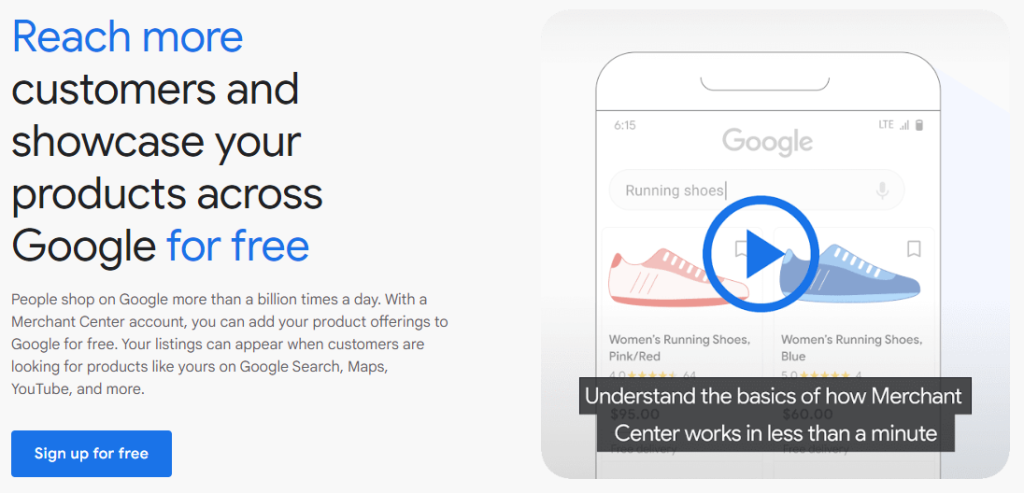Are you interested in creating your own ecommerce website? If you want to develop an ecommerce website, it is important that you know the basics of web development. With this 6-step guide for beginners, we will teach you how to create an ecommerce site from scratch!
3 Best Website Platforms for Building An Ecommerce Website
Let’s start out by talking about the three most common ecommerce platforms for online stores. To be honest though, WooCommerce and Shopify are far more popular than our third mentioned ecommerce platform of BigCommerce.
1.) WooCommerce
WooCommerce is an open-source plugin for WordPress that allows businesses to create and manage an ecommerce store.
With WooCommerce, businesses can set up and customize an online store, manage and track inventory, process orders and payments, and handle shipping and tax calculations, all from the comfort of their WordPress admin area.
There are also numerous popular marketing tools available for WooCommerce, since it runs on the incredibly popular WordPress CMS.
One of the main benefits of using WooCommerce is its flexibility and customization options, since it is an open-source plugin. This means you can access and modify the source code to tailor the platform to your specific needs. This is only partially true of Shopify and BigCommece, since those platforms can only be modified to a lesser amount and through their respective APIs.

2.) Shopify
Shopify is a popular ecommerce platform that allows businesses to create an online store to sell their products. It is a great choice for online businesses, since it provides an easy-to-use, all-in-one solution for managing an online store. You don’t even need web hosting, since it is a Software-as-a-Service (SaaS) application.
With Shopify, you can set up and customize an online store, manage and track your inventory, process orders and payments, and handle shipping & tax calculations without the help of a Shopify web developer. It also offers a range of marketing and SEO tools to help businesses promote their products and increase visibility online.
One of the main benefits of using Shopify is its simplicity and ease of use. It requires no coding or technical expertise, so it is accessible to people who don’t have experience in web development. There are also numerous themes you can choose from, and apps you can install to bring in new functionality.
In addition to its core ecommerce platform, Shopify also offers a point-of-sale (POS) system, merchant financing, and customer support.

3.) BigCommerce
Most of what was mentioned about Shopify exists for BigCommerce, with the exception of a built-in POS system and merchant financing options.
The real difference between Shopify and BigCommerce is going to come down to how the admin area looks and feels, how theme development works for developers, and app availability for merchants. The pricing for BigCommerce can also be a little expensive since they more quickly push their Enterprise plans for higher order volume stores.
How to Start an Ecommerce Website?
After reading about some of the best ecommerce platforms, you can now start learning how to set up your own website.
1.) Buy a domain name
The first thing you need to do is buy a domain name for your site. We recommend getting a domain name that’s unique to your brand or business if possible.
Here are some tips for buying a domain name:
- Try to purchase the domain from a reputable source, like GoDaddy or Tucows.
- Try to get a domain that ends in .com, but don’t be disappointed if you have to get a different extension.
- Don’t fall victim to the countless (and mostly unnecessary) upsells offered, like enhanced security, privacy registrations, free marketing, etc.

2.) Choose your ecommerce platform
After you have your domain name, the next step is to choose an ecommerce platform. This is when you’ll need to choose something like WooCommerce, Shopify, or BigCommerce.
If you choose WordPress with WooCommerce, you’ll need to get a web hosting service. Most hosting companies will install WordPress for you free of charge, which will then let you log into the admin area and install WooCommerce, pick out a theme, and start loading your product data.
Pro Tip: We’ve got an article about the best ecommerce hosting companies you can read!
If you’re choosing a SaaS ecommerce platform, like Shopify or BigCommerce, then the steps are fairly simple. All you need to do is create an account on the respective website, then choose a template that closely matches your brand or business, then start loading your product data!
3.) Choose your payment, shipping, and sales tax methods
After you’ve got your store setup and your product data in the admin area, your next step is to finish going through the configuration settings.
The most common, and important areas, to configure are going to be the payment, shipping and sales tax settings.
- Payments: For Shopify, you’ll be able to use Shopify Payments. For BigCommerce and WooCommerce though, you’ll need to pick a merchant account like , Stripe, or PayPal to handle your payment processing.
- Shipping: The best shipping method to offer is going to be free shipping, since it lowers the chances of an abandoned cart. If you can’t do that, the next best option is a low cost flat-rate shipping method that allows you to cover most of the shipping cost. If you are stubborn and want to charge the exact amount of shipping, then feel free to integrate the store with FedEx, UPS, or USPS and show people exact shipping rates – just be warned you’ll have a higher cart abandonment rate!
- Sales Tax: To error on the side of safety, we recommend you consult companies like TaxJar or Avalara for how to handle sales tax on your website. It is also a good idea to check with your accountant for any special rules in your geographic areas.
4.) Launch your ecommerce site
Once you’ve built the site, it’s time to launch your ecommerce store! This is often as simple as pointing the DNS of your newly purchased domain name to your web hosting account (for WordPress stores) or the Shopify / BigCommerce endpoints.
What Happens After Launching an Ecommerce Website?
After launching an ecommerce website, there are a number of steps that you could take to ensure the success of their online store. Let’s go over a few now:
1.) Promote your brand and products on social media
This may involve creating and sharing content on social media, running social advertising campaigns, or reaching out to potential customers through email marketing or other channels.

2.) Grow your website traffic with SEO content
When it comes to growing a business, most people focus on paid advertising. However, ecommerce SEO is still one of the best ways for a new store to get traffic.
For this strategy to be effective, you should figure out a way to offer something of value in your content. Perhaps you could create listicles that rank items you sell to similar items. Maybe you could great demonstrations on how to use your products. Perhaps even videos or write-ups on how to maintain an item you sell?
3.) Upload your products to Google Merchant Center *
If you sell physical products, then it’s important to upload them to Google Merchant Center so they can be listed in the results of a user search.
This is an essential part of marketing your ecommerce website since people will often type product names and phrases into the search bar before buying something online! With this content strategy combined with SEO for organic traffic, you’ll be able to reach a very large audience teeming with new customers!

4.) Track your progress *
Now that you’ve built the website, it’s time to start tracking your progress. You can use Google Analytics or other analytics platforms for this task.
After you have some data on how users are interacting with your site, you should consider expanding and improving things based on their behavior. This process will involve lots of testing so make sure that whatever you change has a measurable impact on your business.
Final Thoughts on Creating an Ecommerce Website *
As you can see from this article, there’s much more to creating a successful ecommerce website than just building and launching it. If you want your business or brand to grow, then it will require some time and effort on your end to market it. If done right, you can expect your site to be a booming success in no time!